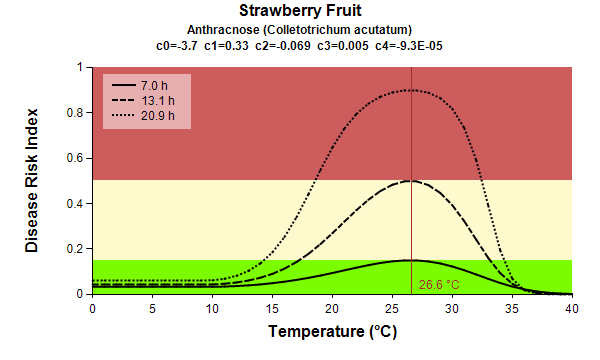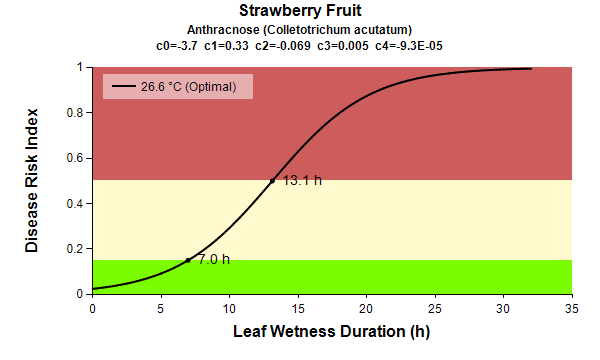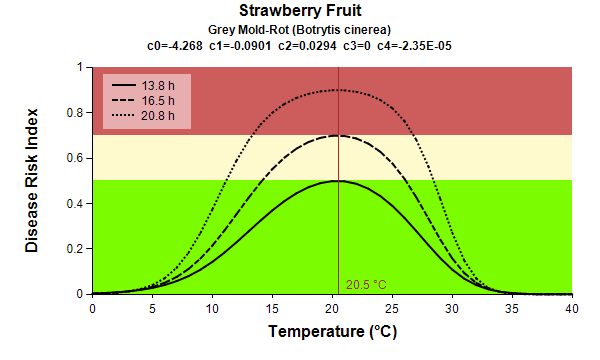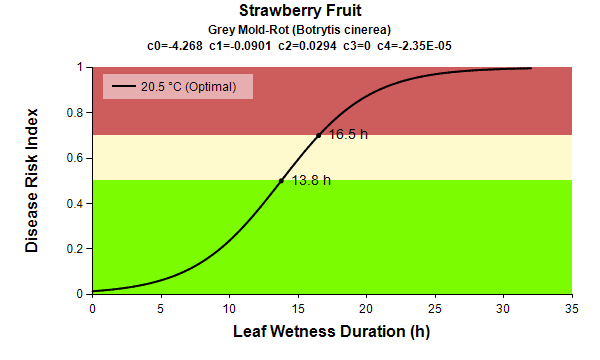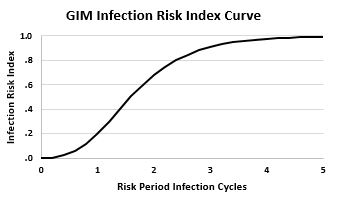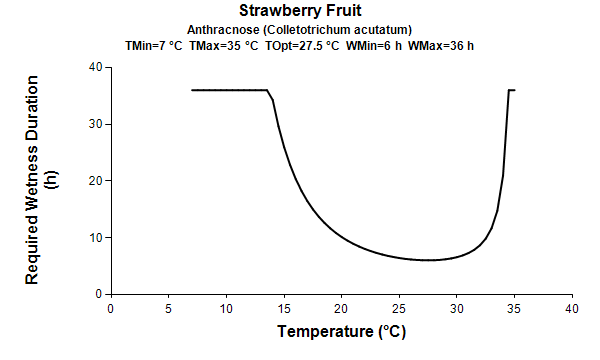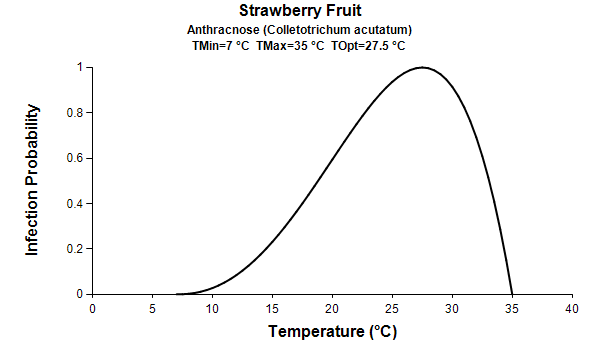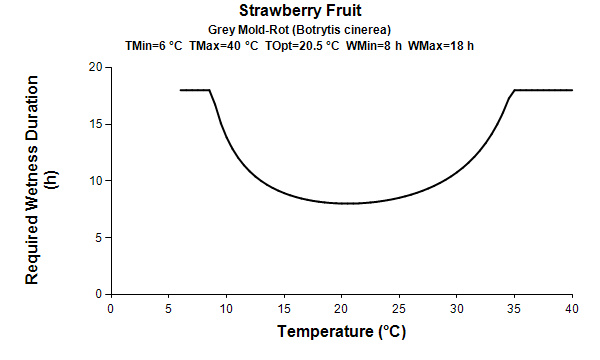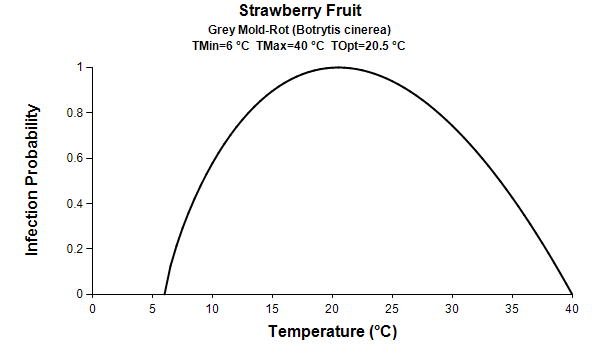Development of Anthacnose and Botrytis Strawberry Fruit Infection Risk Models
go.ncsu.edu/readext?383714
en Español / em Português
El inglés es el idioma de control de esta página. En la medida en que haya algún conflicto entre la traducción al inglés y la traducción, el inglés prevalece.
Al hacer clic en el enlace de traducción se activa un servicio de traducción gratuito para convertir la página al español. Al igual que con cualquier traducción por Internet, la conversión no es sensible al contexto y puede que no traduzca el texto en su significado original. NC State Extension no garantiza la exactitud del texto traducido. Por favor, tenga en cuenta que algunas aplicaciones y/o servicios pueden no funcionar como se espera cuando se traducen.
Português
Inglês é o idioma de controle desta página. Na medida que haja algum conflito entre o texto original em Inglês e a tradução, o Inglês prevalece.
Ao clicar no link de tradução, um serviço gratuito de tradução será ativado para converter a página para o Português. Como em qualquer tradução pela internet, a conversão não é sensivel ao contexto e pode não ocorrer a tradução para o significado orginal. O serviço de Extensão da Carolina do Norte (NC State Extension) não garante a exatidão do texto traduzido. Por favor, observe que algumas funções ou serviços podem não funcionar como esperado após a tradução.
English
English is the controlling language of this page. To the extent there is any conflict between the English text and the translation, English controls.
Clicking on the translation link activates a free translation service to convert the page to Spanish. As with any Internet translation, the conversion is not context-sensitive and may not translate the text to its original meaning. NC State Extension does not guarantee the accuracy of the translated text. Please note that some applications and/or services may not function as expected when translated.
Collapse ▲Anthracnose (Colletotrichum acutatum) and Botrytis (Botrytis cinerea) Strawberry Fruit Rot Risk Models
To predict and forecast strawberry fruit infection risk by Colletotrichum acutatum (anthracnose fruit rot) and Botrytis cinerea (Botrytis fruit rot) in North Carolina, two models have been implemented for each pathogen. The first model set is based on the models used by the Florida Strawberry Advisory System (FLSAS) developed by W. Pavan et al. The FLSAS based models have been evaluated in both Florida and North Carolina for the past several years, and have performed well. The second model set is based on a simple general infection model (GIM) developed by R. D. Magarey et al. The GIM models are currently under evaluation. Both sets of models are based on the same experimental data (Botrytis cinerea study by M. A. Bulger et al. and Colletotrichum acutatum study by L. L. Wilson et al.), but use different equation forms (see below).
The FLSAS and GIM models require air temperature and leaf wetness duration data. Weather data are currently available on a minute time step for 33 ECONet stations located across North Carolina. The stations and data are maintained by the State Climate Office of North Carolina. Leaf wetness duration is calculated based on readings from a Decagon leaf wetness sensor located at each station. National Weather Service (NWS) hourly forecast data are used by the models to predict the risk of infection events in the next 5 to 7 days. Leaf wetness duration for the forecast period is estimated using a modified version of the CART model developed by M.L. Gleason et al. Forecast data for temperature, relative humidity, wind speed, precipitation probability and amount are used by the CART model. ECONet station data and NWS forecast data are updated hourly to provide near real-time infection risk predictions for current events and forecast events.
Infection risk periods start with the onset of rain or dew. For both strawberry fruit pathogens, an infection risk period is terminated by a minimum dry period of four hours. Only the temperatures during the time of leaf wetness are used to calculate the average temperature for the infection risk period.
Note that the risk level displayed for each station on the application map is based on the highest risk index calculated by any of the four models for the 72-hr time period from midnight yesterday through midnight tomorrow. For details about the risk level calculated by each model for each disease and for fungicide recommendations, you must click on the marker for the station of interest.
FLSAS Models
Infection Risk Index:
LWD – leaf wetness duration (hours)
T – average temperature (oC) during wet period
Colletotrichum acutatum (anthracnose fruit rot):
![]()
Low risk: infNdx < .15
Moderate risk: .15 <= infNdx < .50
High risk: infNdx >= .50
Botrytis cinerea (Botrytis fruit rot):
![]()
Low risk: infNdx < .50
Moderate risk: .50 <= infNdx < .70
High risk: infNdx >= .70
GIM Models
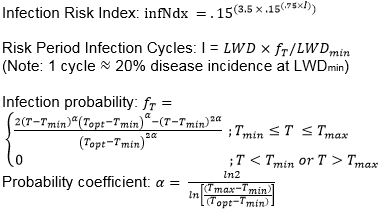
LWD – leaf wetness duration (hours)
T – average temperature () during wet period
Colletotrichum acutatum (anthracnose fruit rot):
Tmin: 7(oC)
Topt: 27.5(oC)
Tmax: 35(oC)
LWDmin: 6 hrs
LWDmax: 36 hrs
Botrytis cinerea (Botrytis fruit rot):
Tmin: (oC)6
Topt: (oC)20.5
Tmax: (oC)40
LWDmin: 8 hrs
LWDmax: 18 hrs
References
Bulger, M. A., Ellis, M. A., Madden, L. V. 1987. Influence of temperature and wetness duration on infection of strawberry flowers by Botrytis cinerea and disease incidence of fruit originating from infected flowers. Phytopathology 77:1225-1230.
https://www.apsnet.org/publications/phytopathology/backissues/Documents/1987Articles/Phyto77n08_1225.PDF”>https://www.apsnet.org/publications/phytopathology/backissues/Documents/1987Articles/Phyto77n08_1225.PDF
Gleason, M. L.; Taylor, S. E.; Loughin, T.C.; Koehler, K.J. Development and validation of an empirical model to estimate the duration of dew periods. Plant Disease, v.78, p.1011-1016, 1994. http://www.apsnet.org/publications/plantdisease/backissues/Documents/1994Articles/PlantDisease78n10_1011.PDF
Magarey, R. D., Sutton, T. B., and Thayer, C. L. 2005. A Simple Generic Infection Model for Foliar Fungal Plant Pathogens. Phytopathology 95:92-100.
http://apsjournals.apsnet.org/doi/pdf/10.1094/PHYTO-95-0092
Pavan, W., Fraisse, C. W., and Peres N. A. 2012. The Strawberry Advisory System: A Web-Based Decision Support Tool for Timing Fungicide Applications in Strawberry. Department of Agricultural and Biological Engineering, Florida Cooperative Extension Service, Institute of Food and Agricultural Sciences, University of Florida publication AE450.
https://edis.ifas.ufl.edu/pdffiles/AE/AE45000.pdf
Wilson, L. L., Madden, L. V., and Ellis, M. A. 1990. Influence of temperature and wetness duration on infection of immature and mature strawberry fruit by Colletotrichum acutatum. Phytopathology 80:111-116.
https://www.apsnet.org/publications/phytopathology/backissues/Documents/1990Articles/Phyto80n01_111.PDF
Links to other sources
Florida Strawberry Advisory system: http://agroclimate.org/tools/Strawberry-Advisory-System/
National Weather Service Digital Forecast Database: http://graphical.weather.gov/xml/
NC ECONet: http://climate.ncsu.edu/econet
State Climate Office of North Carolina: http://climate.ncsu.edu/



